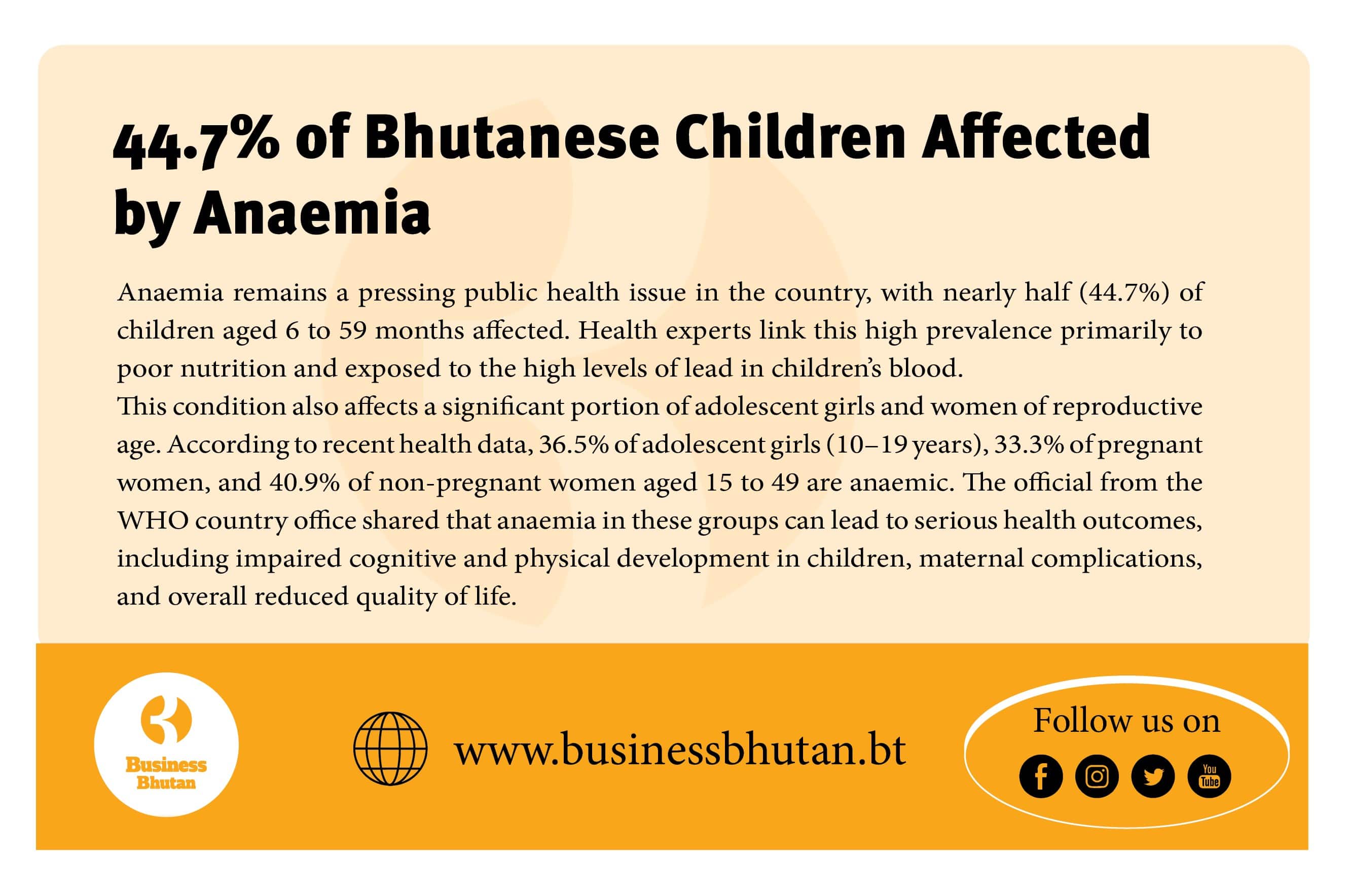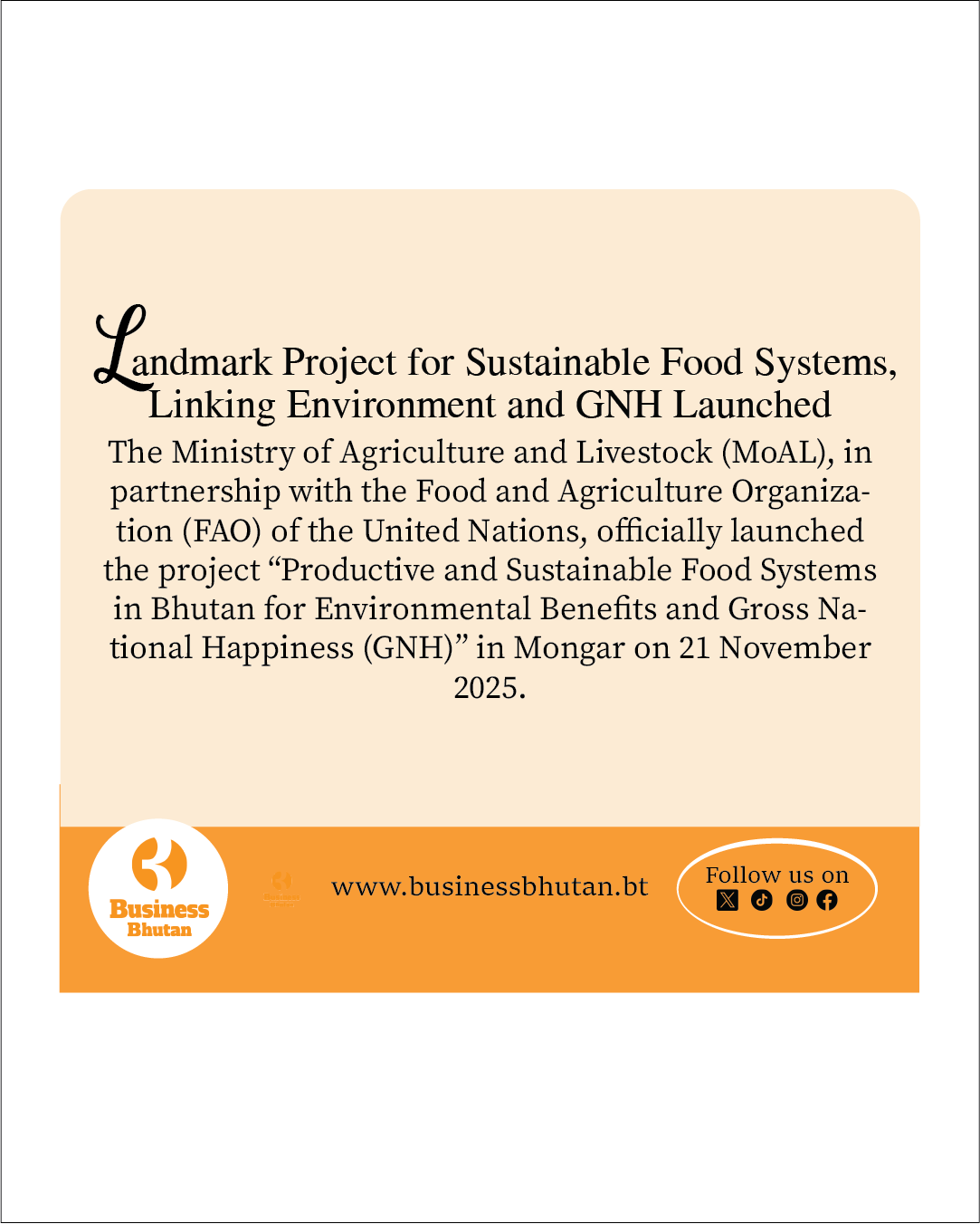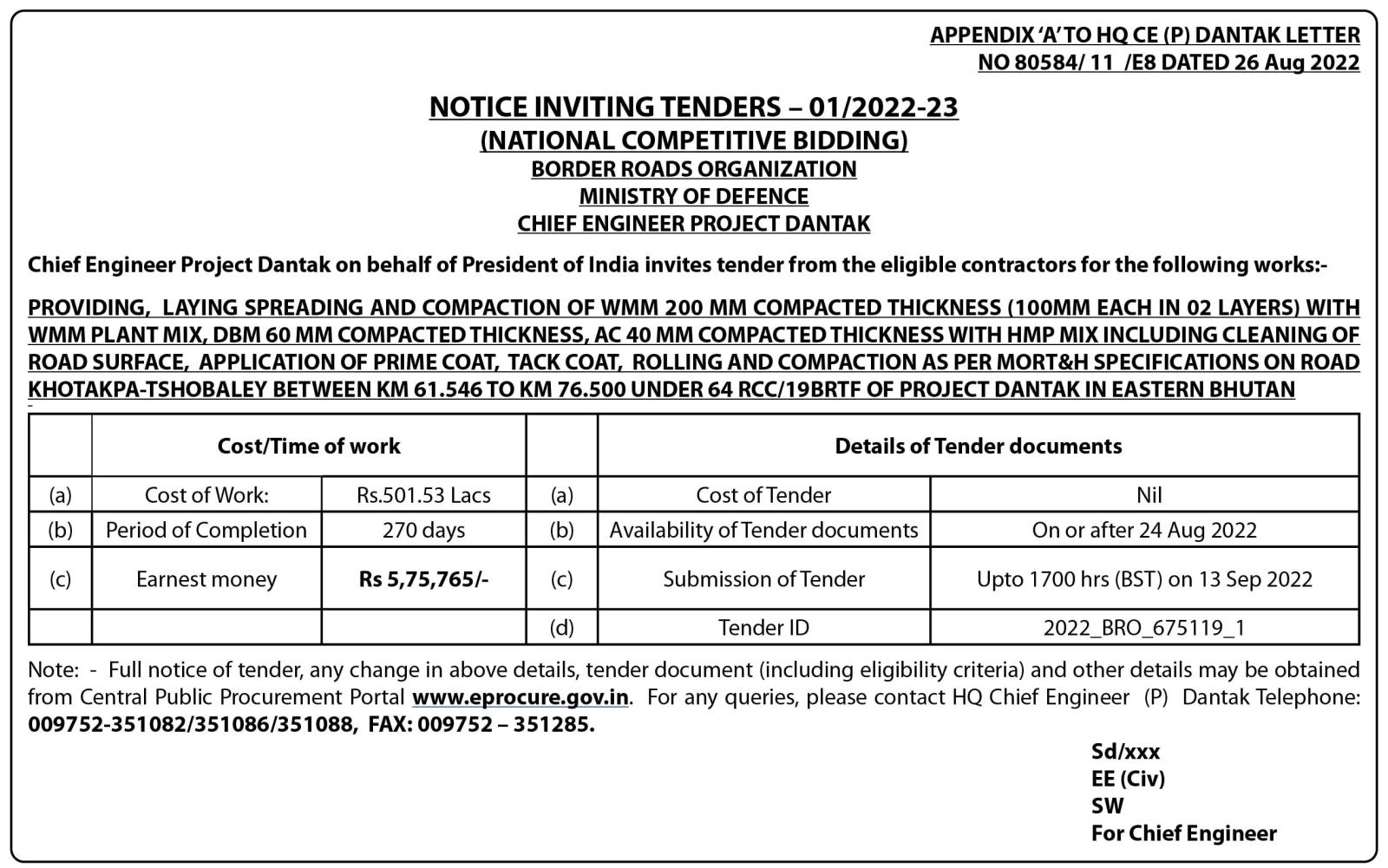Study finds a possible association between lead exposure, poor nutrition and Anaemia
Anaemia remains a pressing public health issue in the country, with nearly half (44.7%) of children aged 6 to 59 months affected. Health experts link this high prevalence primarily to poor nutrition and exposed to the high levels of lead in children’s blood.
This condition also affects a significant portion of adolescent girls and women of reproductive age. According to recent health data, 36.5% of adolescent girls (10–19 years), 33.3% of pregnant women, and 40.9% of non-pregnant women aged 15 to 49 are anaemic. The official from the WHO country office shared that anaemia in these groups can lead to serious health outcomes, including impaired cognitive and physical development in children, maternal complications, and overall reduced quality of life.
One of the most alarming contributing factors to anaemia in the country is elevated blood lead levels in children and women. Lead interferes with the body’s ability to produce healthy red blood cells, resulting in microcytic hypochromic anaemia—a form characterized by smaller, and paler red blood cells with reduced oxygen-carrying capacity.
A recent health report reveals that 75.9% of Bhutanese children aged 1 to 6 years have dangerously high blood lead levels, with a mean of 5.3 micrograms per deciliter. Even more concerning, three out of five pregnant or breastfeeding women had levels exceeding 23.5 micrograms per deciliter, far above the safety threshold. Among monastic children under 13 years, the average blood lead level was 5.9 micrograms per deciliter. These findings point to a serious public health risk and an urgent need for intervention.
At the same time, poor dietary diversity especially in rural and monastic communities remains a persistent issue. Traditional diets often lack key nutrients, particularly iron, which is the primary cause of anaemia. Supplementation programs, though in place, face low compliance, especially among adolescents and pregnant women.
“Many beneficiaries either forget or choose not to take the supplements regularly, diminishing the overall effectiveness of these programs,” an official from the World Health Organization (WHO) country office said.
Meanwhile, an official from the central monastic body shared that the monastic body is engaging other relevant stakeholders to promote a nutrition program among the monasteries.
In response to this growing crisis, the country has implemented several national initiatives aimed at reducing the prevalence of anemia. One of the cornerstone programs is the nationwide rollout of preconception care, launched in May 2025. This initiative includes the provision of folic acid supplements and nutrition counselling for women of reproductive age. The objective is to improve the nutritional status of women before conception to ensure healthier pregnancies and better outcomes for both mothers and their babies.
Further efforts have been made through the introduction of Multiple Micronutrient Supplementation (MMS) in 2024 and the continued distribution of Iron-Folic Acid (IFA) supplements. These programs aim to combat micronutrient deficiencies, particularly iron deficiency, which is a primary cause of anemia. In 2025, Bhutan also introduced a Conditional Cash Transfer program to incentivize and support pregnant women to attend antenatal check-ups and adhere to nutritional supplementation.
In schools, the government has continued to expand its nutrition-focused interventions for adolescents. Since 2017, all public schools have been providing fortified rice and fortified oil to enhance the nutritional content of school meals. More recently, in 2025, tea traditionally served in schools was replaced with fortified milk to increase the intake of calcium and other essential nutrients.
Moreover, in February 2025, with the launch of the “One Child, One Egg” program, which ensures every student receives an egg per day, significantly improving their protein and micronutrient intake. Weekly IFA supplementation continues to be provided to adolescent girls in schools, complemented by long-standing programs such as Vitamin A supplementation, initiated in 1984, and deworming campaigns that began in 1988. Nutrition education is also being integrated into the school curriculum to foster long-term healthy eating habits.
Despite these national efforts, the official from WHO country office said that the country continues to face multiple challenges in the fight against anemia. One of the most significant obstacles is low compliance with supplementation programs, particularly among adolescents and pregnant women. “Many beneficiaries either forget or choose not to take the supplements regularly, diminishing the overall effectiveness of these programs,” the official said adding that dietary diversity also remains a critical issue, especially in rural and monastic communities, where traditional diets often lack essential vitamins and minerals.
The government and health partners recognize that addressing anemia requires a holistic approach. Beyond supplement distribution and school feeding programs, there is a pressing need for widespread behavior change communication. Educating families, communities, and religious institutions about the importance of nutrition, proper food preparation, and avoidance of lead exposure is critical to reducing the burden of anemia.
Looking ahead, the National Nutrition Strategy and Action Plan (NNSAP) for 2026 to 2030 provides a renewed framework to combat anemia more effectively. A key priority under this strategy is the review and update of the National Anemia Control Program to reflect the latest evidence and to better align with global targets.
Furthermore, the government plans to expand health and nutrition programs to include monastic institutions, which house a significant number of children and adolescents. The strategy also emphasizes the need to strengthen multi-sectoral partnerships across the health, education, agriculture, and finance sectors to ensure coordinated action and resource mobilization.
Efforts will also focus on assessing and improving compliance rates for key nutrition interventions, such as Micronutrient Powders (MNP), Multiple Micronutrient Supplements (MMS), and Iron-Folic Acid supplements across all target groups. There is also a renewed push to promote dietary diversity by encouraging the consumption of locally available nutrient-rich foods and discouraging the intake of nutrient-poor processed foods.
On the other hand, globally, anemia affects over half a billion women aged 15 to 49 years and approximately 269 million children between the ages of 6 and 59 months.
Recognizing the impact of anemia on public health and development, the 65th World Health Assembly in 2012 endorsed the reduction of anemia in women of reproductive age as the second global nutrition target. The global community committed to achieving a 50 percent reduction in anemia in this demographic by the year 2025.
Anemia is also central to the Sustainable Development Goals, particularly SDG 2: Zero Hunger. Target 2.2 specifically aims to end all forms of malnutrition by 2030, with a focus on achieving internationally agreed-upon targets on stunting and wasting in children under five by 2025, and addressing the nutritional needs of adolescent girls, pregnant and lactating women, and older persons. One of the key indicators under this target is the prevalence of anemia in women aged 15 to 49, disaggregated by pregnancy status.
Nidup Lhamo from Paro




![Fresh Beginnings: Pasakha Vendors Gear Up for New Vegetable Market - Duplicate - [#16963] Fresh Beginnings: Pasakha Vendors Gear Up for New Vegetable Market - Duplicate - [#16963]](https://businessbhutan.bt/wp-content/uploads/2025/11/Asset-200.png)











